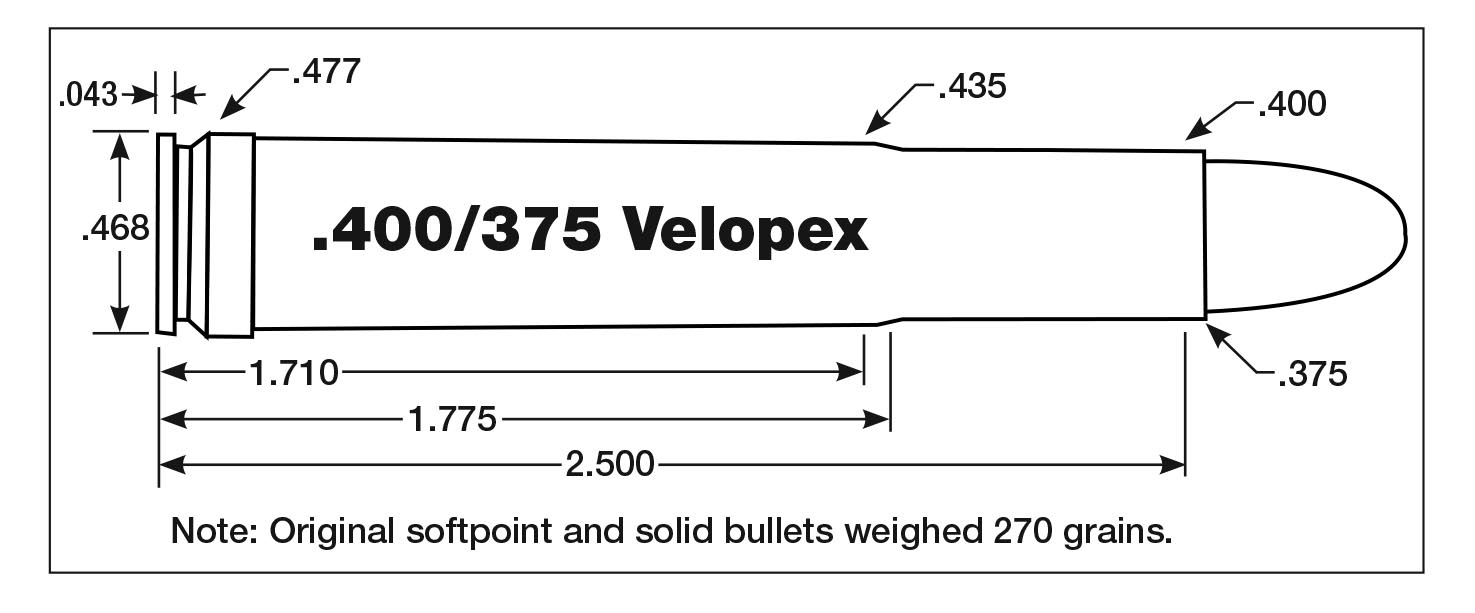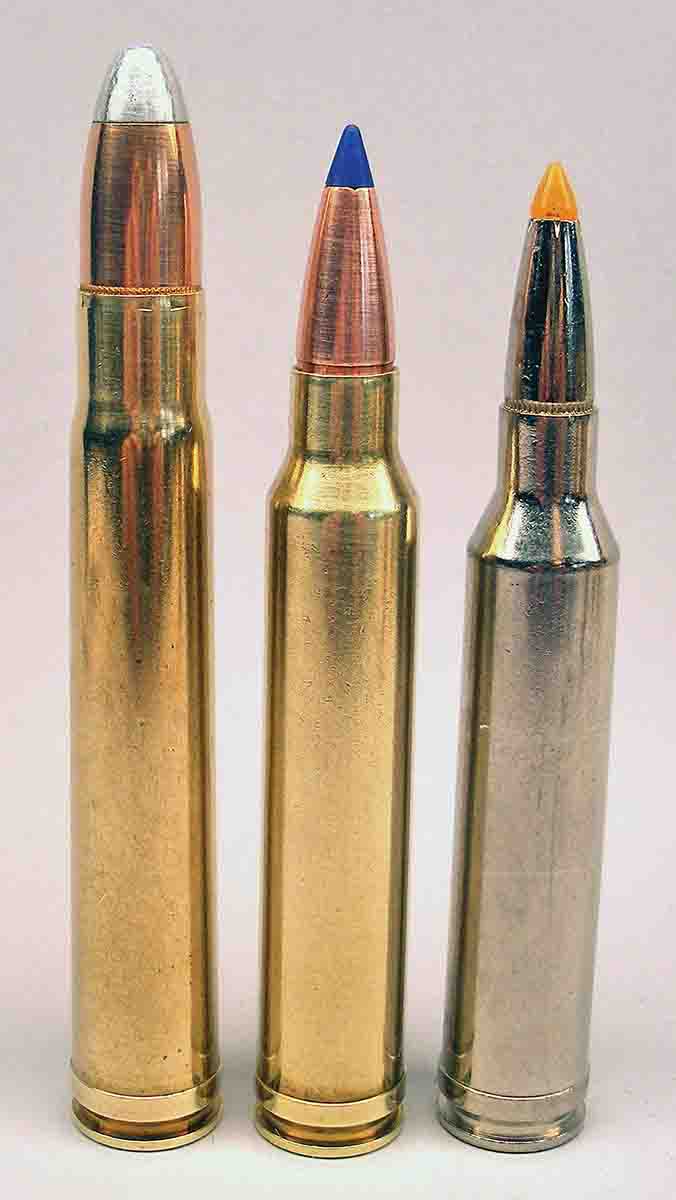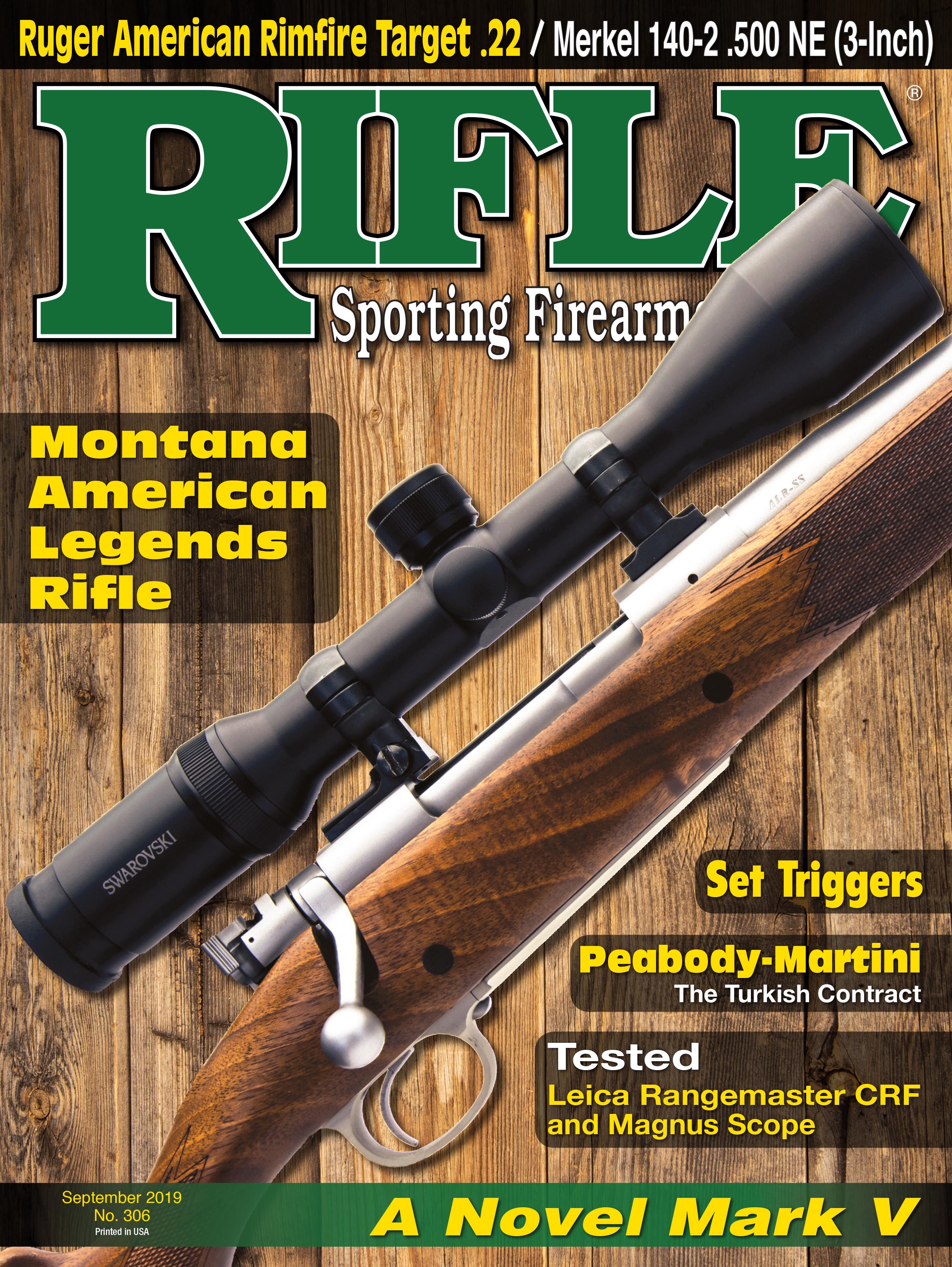Spotting Scope
The Belt
column By: Dave Scovill | September, 19
One of the most topical subjects in the last few years has been what shooters refer to as the “belt,” or “useless belt,” on what have been historically known as “magnum” cartridges – .300 Winchester Magnum, Weatherby magnums, etc. – since about 1905. The belt is that raised area at the forward edge of the extractor groove at the rear of the case that measures .529 to .530 inch in diameter. The case body at the front edge of the belt averages around .513 inch. Belt width averages around .080 inch.

The belt was first used commercially by Holland & Holland in Europe on the .400/375 H&H “Vel-opex” in Mannlicher-Schönauer Model 1905 rifles (“Pet Loads,” Handloader No. 185, February- March 1997). The belt was designed to form a more positive surface for the cartridge to establish headspace as opposed to the somewhat limited shoulder area on the Velopex case. The belt effectively replaced the rim on rimmed cartridges that made feeding in bolt actions somewhat problematic.
Winchester’s F.G. Bennett also patented the belted .30 USG in 1893 that would likely have made flawless feeding in the Model 95 box magazine rifle a little easier to achieve, but the company forged ahead with rimmed cartridges – .40-72, .38-72, .405, .30-40 and .35 WCF – until the 1903 and 1906 rimless government .30 calibers were adopted.
Notes in Daniel Shuey’s book W.R.A. Co. Headstamped Cartridges and Their Variations state the belt on the .30 USG “was for alignment and positioning of cartridges in clips.” The case was a bottleneck design, so the belt may or may not have served to establish headspace along with the case shoulder. Either way, the chamber most certainly had a recess cut to accommodate the belt.
Research several years ago also revealed a steel-belted case patent from the 1860s in Europe. So the .375 H&H, circa 1912, was preceded by at least three previous patents and the .400/375 H&H Velopex was the first to be commercially produced in 1905.
With all that out of the way, the subject of belted cases has come up, apparently, owing a dubious argument that suggests the belt doesn’t allow (form) a proper (snug) headspace at the rear of the chamber, whereas rimless cases that headspace on the shoulder do.
For the moment at least, we can assume the debate over which design is better is based on appropriate chamber tolerances. That is, the rifle’s action design and chamber allow effortless chambering, and the case neck expands upon firing to release the bullet without undue pressure. In other words, chambers have acceptable tolerances to make sure the rifle functions properly. If it’s a repeater with a box magazine, it must also feed flawlessly.
Some people claim the belt impedes chambering. How that occurs remains a mystery, since professional hunters have used the belted .375 H&H and .458 Winchester Magnums, for example, successfully against dangerous and nondangerous game around the world for over a century.
Aside from the fact that cartridge cases must be manufactured within minimal tolerances to ensure proper fit and performance in all rifles chambered for any given cartridge, the easiest way to establish headspace on a belted or rimless case for a specific rifle is to shoot (fireform) it, so it expands to fit the chamber. At that point the case can be sized full length, partially or neck only. The method of sizing should not affect headspace on a fired case, although the shoulder must not be pushed back to exceed established tolerances on either case design. We must determine for ourselves, however, that the chamber does not have excessive headspace that can eventually result in case head separations, regardless of the design.

Full-length sizing reduces the size of the case body and neck to within SAAMI standards for the cartridge of interest. By full-length sizing, however, it is possible to set the shoulder back a bit too much, which affects fit in the chamber and may cause excessive headspace. To avoid problems, set up the sizing die so that when the press handle is down, the shellholder is in firm contact with the bottom of the sizing die and tighten the setscrew. Then size a case and make sure it will chamber in the rifle with only a slight hint of resistance, ensuring the case shoulder is in firm contact with the chamber shoulder. If the bolt won’t close on a previously fired case, turn the sizing die up slightly and try again in small increments until the bolt closes with minor resistance.
If the upper lip on the shellholder is too thick and prevents full-length sizing, manufacturers can supply a set of shellholders for most popular cartridges that cover headspace tolerances, plus or minus, to produce a custom chamber fit for the cartridge of interest when setting up the die to fit chamber tolerances.
Partial sizing on a fired case stops the case just short of fully entering the sizing die, leaving a slight shoulder on the expanded neck at the junction of the shoulder and case neck while the case body is in slight contact with the body of the sizing die. In practice, the false shoulder is used to establish headspace by pushing the case back against the bolt face. A false shoulder may also be used to establish firm headspace on an unfired case by sizing the case neck up with a slightly larger neck sizer, then stop the full-length sizing die about .010 to .015 inch short of the shoulder, which when chambered holds the case firmly against the bolt face, ensuring it fits the chamber perfectly when fireforming.
Once the bottlenecked case is fireformed or an unfired case is partially or neck sized with a false shoulder to fit the chamber of interest, the rim design no longer matters, since the fired case will fit the chamber it was originally fired in.
The belt is also used to establish headspace on straight-walled case designs like the .458 Winchester Magnum, .458 Lott and .450 Marlin where there is no rim or shoulder. A case design with a long, sloping shoulder angle often benefits from a belt as well, especially when used extensively under adverse field conditions: e.g., Africa or Alaska.
It could be claimed that cartridges with long, sloping shoulder designs are inefficient, whatever that means, but that is to ignore the original reason for that case design – effortless chambering – and does not imply the belt doesn’t do the job it was designed to do. In short, the belted H&H and some older rimmed cartridges are generally a bit more tolerant of field conditions than finely tuned target rifles, albeit the former are perfectly adequate for their intended purpose in terms of field accuracy.
Some of the older rimmed and belted (big-game) cartridges have also been tamed somewhat in terms of pressure to ensure that intense tropical heat does not cause pressure excursions, which might result in a locked action, or worse, a blowout. That’s not the kind of wreck anyone wants to deal with when hunting potentially dangerous game in the pucker brush.
Where the belted H&H case has been under fire lately by all sorts of unsupported claims in print and blather in Internet circles, it has generally been proven to be quite suitable under rough use and abuse, dirt, dust and moisture, as have other basic case designs.
Where it would generally be considered poor form in cultured circles, which in Oregon logging camps and communities where I grew up translates nicely to “stupid,” to lecture your African professional hunter, Alaskan outfitter or guide about how that well-worn .375 H&H rifle resting on his shoulder is somehow inappropriate for the occasion, it might be best to keep it to yourself.


